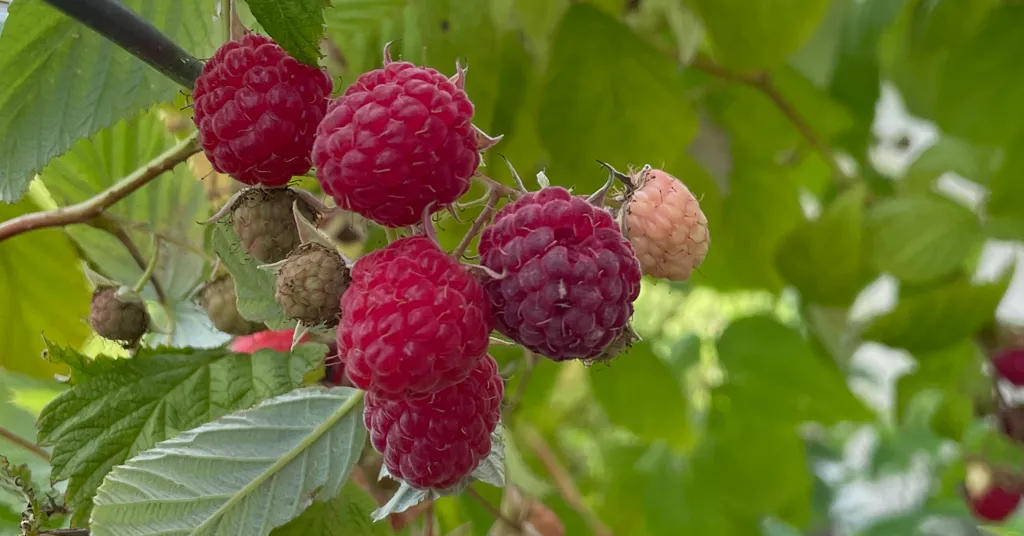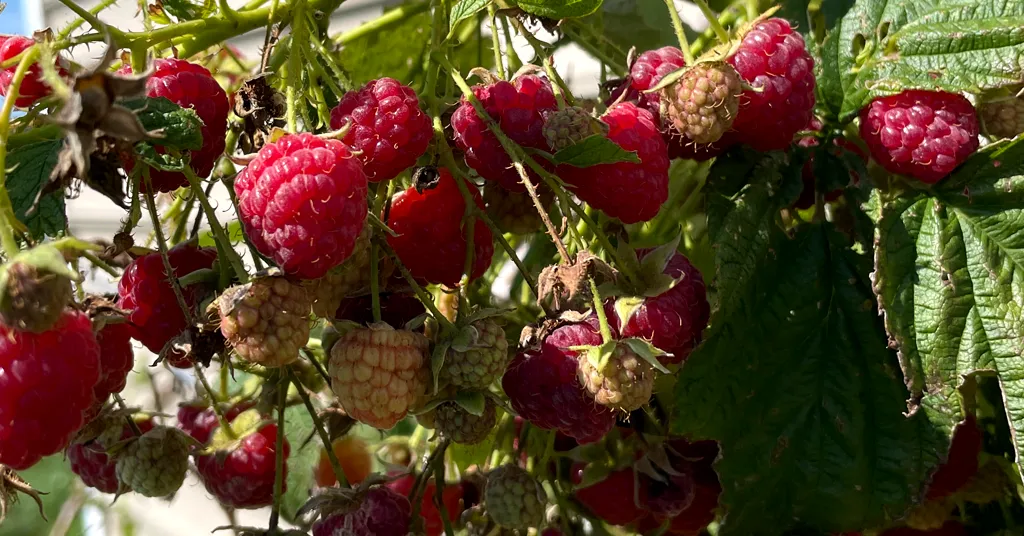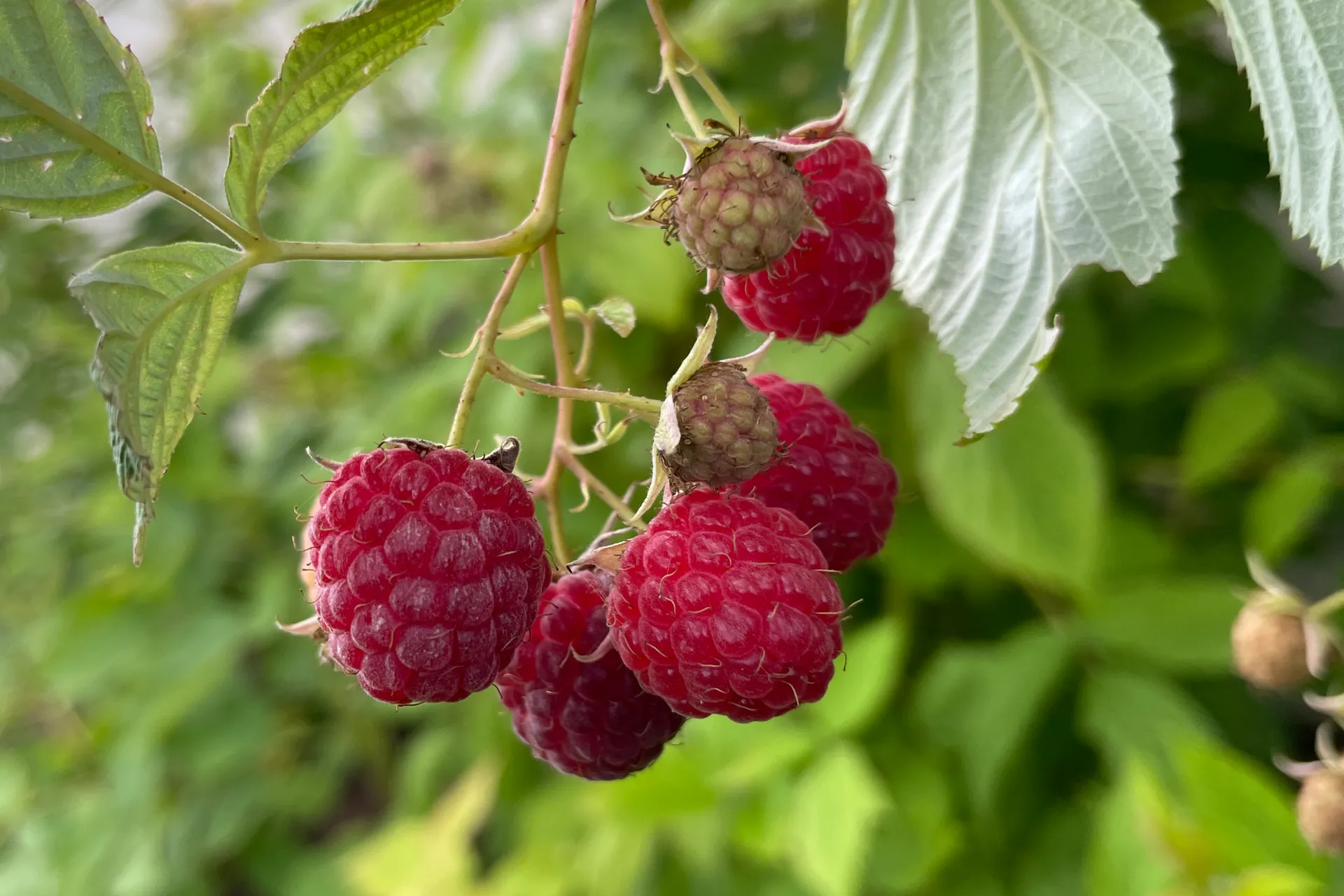This post may contain affiliate links. When you purchase through links on my site, I may earn a commission at no cost to you. See my Privacy Policy for details.
Are you looking for a delicious and nutritious addition to your home garden? Look no further than growing raspberries! These vibrant and tasty berries are a popular fruit for home gardens and are loved for their sweet and tangy flavor. But did you know that raspberries are also packed with vitamins, antioxidants, and other nutrients that make them a healthy choice for your diet?
I want to share with you some practical tips and advice for successfully growing raspberries at home. Whether you’re a beginner gardener or a seasoned pro, these tips will help you cultivate a thriving raspberry patch that produces a bountiful harvest.
Choosing the Right Raspberry Variety
When it comes to growing raspberries, choosing the right variety is essential. There are two types of raspberries available, including summer-bearing and fall-bearing varieties, each with their unique characteristics.

Summer-Bearing Raspberries
Summer-bearing raspberries are a popular choice for home gardeners because they produce a large crop of berries in a relatively short time, usually in early to mid-summer. These varieties grow in a two-year cycle, meaning that they produce fruit on second-year canes or branches. In the first year, the plants produce vegetative growth in the form of new canes or branches, while in the second year, the same canes produce flowers and fruit. Summer-bearing raspberries can also be called floricane-bearing raspberries
One of the benefits of summer-bearing raspberries is that they produce a large crop of berries all at once, which makes them perfect for preserving or using in baking. However, this also means that the harvesting season for these varieties is relatively short, usually lasting only a few weeks. Once the berries have been harvested, the second-year canes that produced fruit should be pruned to the ground to make way for new canes to grow and produce fruit the following year.
There are many different varieties of summer-bearing raspberries to choose from, each with its unique characteristics. Some of the most popular varieties include Killarney, Royalty, and Boyne, all of which are known for their large, sweet berries and vigorous growth habits.
Fall-Bearing Raspberries
Fall-bearing raspberries, also known as everbearing raspberries, are an excellent choice for gardeners who want to extend the raspberry harvesting season into the fall. These varieties produce fruit on first-year canes or branches, which means they do not require a two-year cycle to produce fruit, as summer-bearing varieties do. Fall-bearing raspberries can also be called primocane-bearing raspberries.
The fall-bearing raspberry plants produce two crops of fruit each year. The first crop usually ripens in late summer or early fall, while the second crop ripens later in the fall. Because the fruit develops on first-year canes, gardeners do not need to worry about pruning the plants after the first year of growth, unlike summer-bearing varieties.
Fall-bearing raspberries are ideal for gardeners who want to enjoy fresh raspberries for a longer period. With proper care and management, these varieties can provide a continuous supply of fresh berries from late summer until the first frost. Popular fall-bearing raspberry varieties include Heritage, Autumn Bliss, and Caroline, all of which are known for their delicious flavor and reliable fruiting habits.
When choosing a variety of fall-bearing raspberries, it’s essential to consider the specific climate and growing conditions in your garden. These varieties may not be suitable for all regions or growing conditions, so be sure to do your research to ensure that you select a variety that will thrive in your specific environment.
Selecting Raspberry Variety
When choosing the right raspberry variety for your garden, consider factors such as your climate, soil type, and available space. If you live in a colder climate, for example, you may want to choose a hardy variety that can withstand freezing temperatures. If you have limited space, a compact variety that doesn’t require staking may be the best option.
I grow my raspberries up against the back of my garage. I selected the Heritage fall-bearing raspberries for my raspberry patch. They started as 6 small canes which have spread and grown over the years to provide a fantastic harvest.
Ultimately, the right raspberry variety for you will depend on your personal preferences and needs. So take some time to research different varieties and choose one that will thrive in your garden and provide you with delicious and nutritious fruit for years to come!

Selecting Location for Raspberry Patch
Choosing the right location for your raspberry patch is crucial for the success of your plants. Raspberries require a lot of sunlight, so it’s important to select a location that receives at least 6 hours of direct sunlight per day. A sunny location not only promotes healthy growth but also ensures that the fruit ripens properly, resulting in better flavor and higher yields.
Raspberries require well-draining soil to thrive. They do not tolerate standing water, so it’s essential to choose a site that does not get waterlogged after heavy rains. If your soil is heavy and tends to retain water, you may want to consider planting raspberries in raised beds or mounds to improve drainage.
Raspberries prefer a cool and moist climate, so it’s a good idea to choose a site that is sheltered from hot and dry winds. If your garden is in a particularly windy area, you may want to consider planting raspberries near a fence or hedge to provide some protection from the wind.
Preparing the Soil for Raspberries
The ideal soil conditions for growing raspberries include a pH level between 5.5 and 6.5, good drainage, and adequate nutrient content. Raspberries prefer loamy soil that is rich in organic matter, which helps to retain moisture and provide the nutrients that the plants need to thrive.
To prepare the soil for planting raspberries, start by testing the soil to determine the pH level and nutrient content. This can be done using a soil testing kit, which can be purchased from most garden centers or online. Based on the results of the soil test, you can adjust the pH level by adding lime to raise the pH or sulfur to lower it. You can also add organic matter, such as compost, well-rotted manure, or peat moss, to improve the soil’s nutrient content and texture.
Planting Raspberries
Plant the raspberry canes or seedlings in a row, spacing them about 2 to 3 feet apart, with rows spaced 6 to 8 feet apart. The canes should be planted at a depth of about 2 inches below the soil surface, and the soil should be gently packed around the roots. After planting, water the raspberry plants thoroughly to help settle the soil around the roots.
Care and Maintenance of Raspberry Plants
Raspberries need consistent moisture to grow and produce fruit, so it’s important to water them regularly. Be sure to water your plants deeply, but avoid overwatering as this can lead to root rot. A good rule of thumb is to water your plants once a week, or more often during hot and dry weather.
Raspberry plants benefit from regular applications of nitrogen-rich fertilizers. Be sure to fertilize your plants in early spring and again in late summer to promote healthy growth and fruit production.
Pruning is an important part of caring for raspberry plants, as it helps to promote healthy growth and fruit production. In late winter or early spring, prune out any dead, damaged, or diseased canes. Then, remove any canes that are thinner than a pencil or are growing outside of the designated growing area. This will help to promote better air circulation and light penetration, leading to healthier plants and higher yields.
Harvesting Raspberries
Raspberries are typically ready for harvest in early summer for summer-bearing varieties, and in late summer to early fall for fall-bearing and everbearing varieties. You can tell when your raspberries are ripe by looking for fruit that is plump, bright in color, and easily detaches from the plant when gently tugged.
When it comes to picking raspberries, it’s important to handle the fruit gently to avoid bruising or damaging the delicate berries. Use your fingertips to carefully pluck the ripe berries from the plant, and avoid pulling on the fruit too hard as this can cause the plant to lose its leaves and fruit prematurely.
To encourage continued fruiting throughout the season, it’s important to pick raspberries regularly. This helps to keep the plant producing new fruit and prevents over-ripening or rotting on the plant.
One of my favorite ways to use fresh raspberries is in Chocolate Raspberry Sauce which can be water bath canned. It is fantastic on ice cream or even spread on a piece of bread.
Diseases and Pests
One of the most common diseases affecting raspberry plants is gray mold, also known as botrytis. This disease can cause the fruit to rot and can also infect the leaves and stems of the plant. To prevent gray mold, it’s important to maintain good air circulation around the plant and to remove any diseased or infected plant material.
Another common disease is powdery mildew, which appears as a white powdery coating on the leaves and stems of the plant. This disease can be controlled by ensuring good air circulation, planting in a location with plenty of sunlight, and removing any infected plant material.
Raspberry plants can also be affected by pests such as aphids, spider mites, and Japanese beetles. These pests can damage the leaves and fruit of the plant and can reduce yield. To control these pests, it’s important to regularly inspect your plants for signs of infestation and to use natural or chemical methods of pest control as necessary.
Growing Raspberries
Whether you choose a summer-bearing or fall-bearing variety, it’s important to select the right type of raspberry for your garden and your needs. Preparing the soil is crucial for healthy plant growth, and regular care and maintenance throughout the growing season will help ensure a bountiful harvest.
When it comes time to harvest your raspberries, be sure to pick the fruit when it’s ripe and handle it gently to avoid damaging the delicate berries. And don’t forget to try out some delicious raspberry-preserving recipes, such as jams and sauces!
If you’re new to gardening there are many resources on this site. Don’t be afraid to reach out to me or seek assistance from your local nursery or garden center.
Overall, growing raspberries is a wonderful way to connect with nature, enjoy fresh and delicious fruit, and enhance your gardening skills. So why not give it a try and see what you can grow in your backyard?

